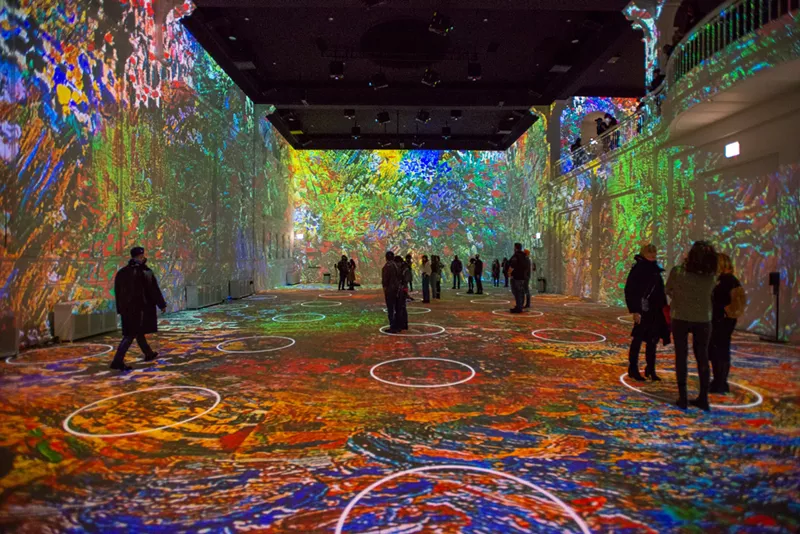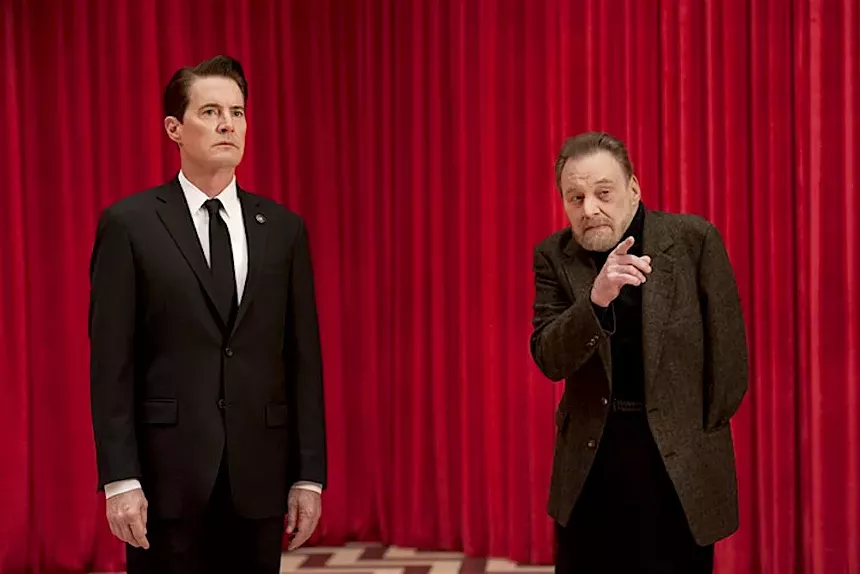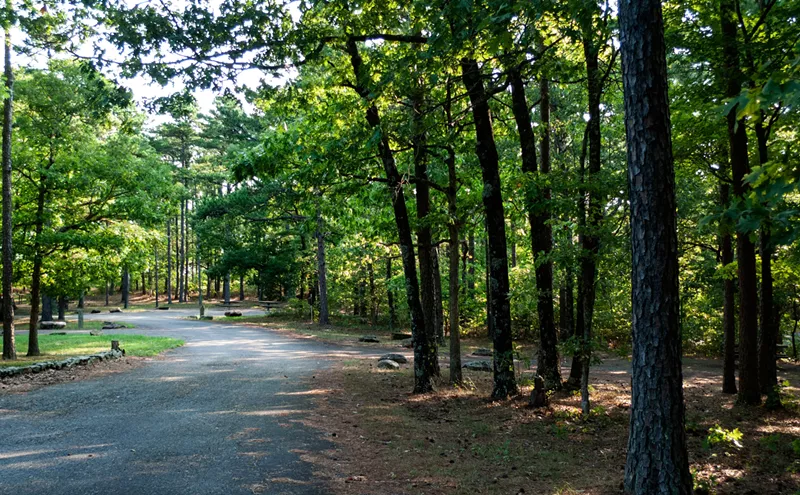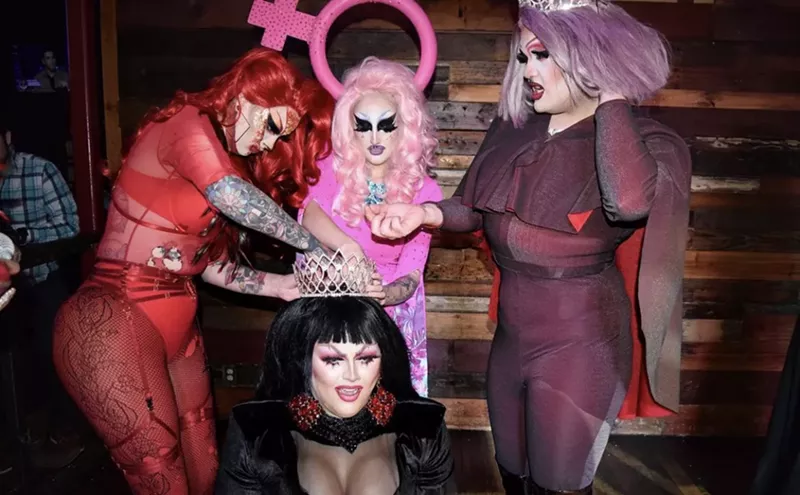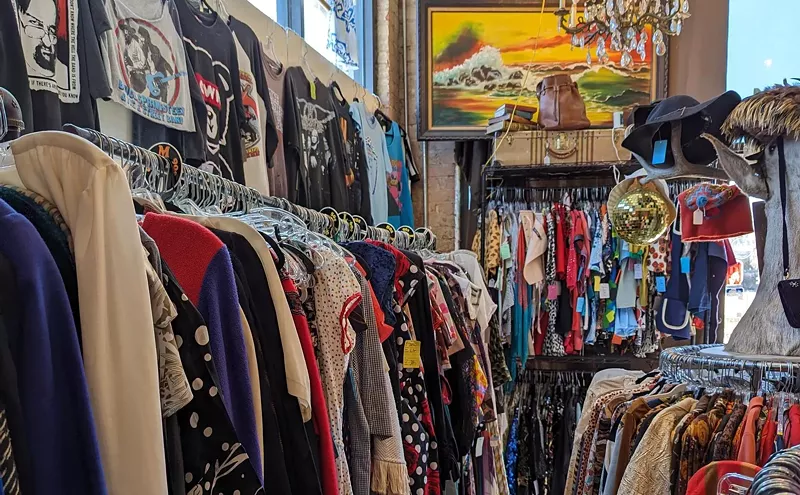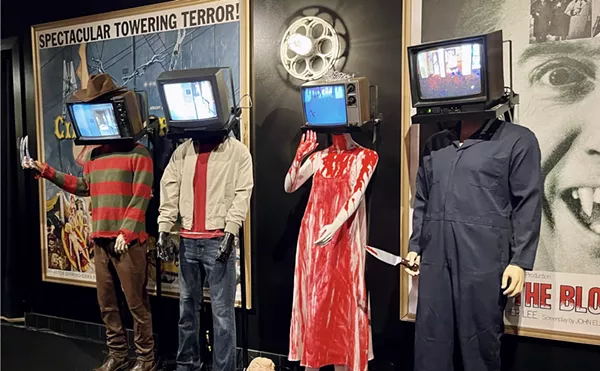This is thanks in part to new advancements in basic technology including projections, lighting and photography that allow the transference of great works of art into different mediums. They basically work like this: Once the curator or creator of the exhibition finds an open space with large blank walls that allow them to project famous works of art in a larger than life setting, visitors can walk through the space and see enlarged and detailed works of art. They can also learn more about the artists' history, influence and techniques.
Here's an even more succinct description: Imagine if someone melted down the entire ceiling of the Sistine Chapel into a Play-Doh form and wrapped the interior walls of a room with it.
The immersive experience has been applied to the timeless works of Claude Monet, Frida Kahlo and Vincent Van Gogh (twice at the same time!). Now the medium has been expanded to more popular forms of modern art starting with a new Walt Disney Animation exhibition with works of art from some of the Mouse House's most famous films. It opens on Thursday, April 20, at Lighthouse ArtSpace Dallas, 507 S. Harwood St. Moving Disney pictures? High-tech Disney events? Where have we seen these things before? Look, this just means that pop art can get the immersive treatment. We've got some ideas for this new artistic trend.
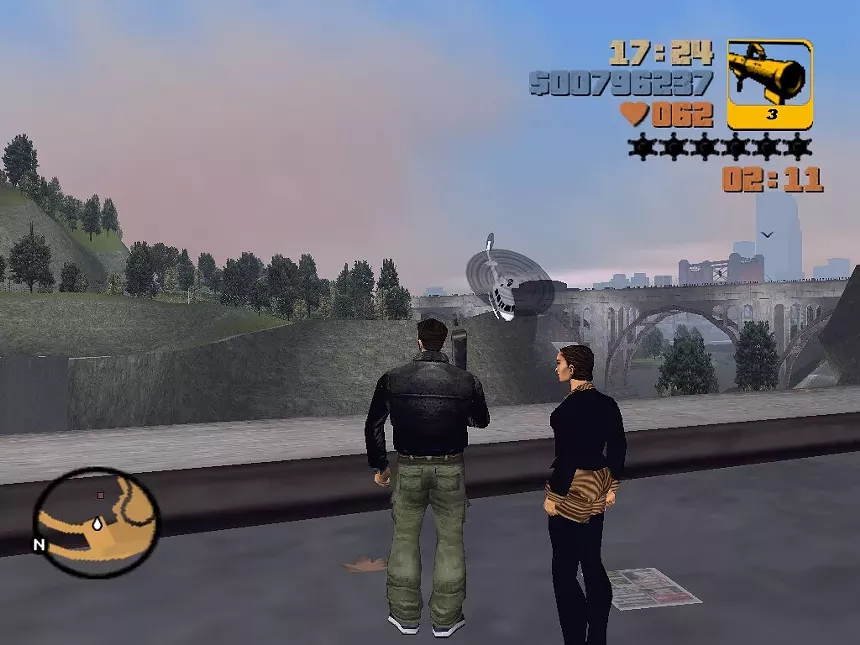
The Grand Theft Auto games offer more than just the ability to blow shit up with bazookas.
LikeAFinalBoss/Flickr
Rockstar Games' flagship series introduced the word "immersive" into video games. The first GTA games were overhead experiences that challenged players to run missions for crime bosses across a virtual map the way that a kid controls a Hot Wheels car. Grand Theft Auto III launched the series into icon status by building a virtual world that wrapped around the player and elevating the sandbox game genre into a whole new realm of possibilities.
Building a game that envelops a player requires a cohesive art style, and it's one that's been copied and built upon over other franchises. The GTA worlds are a mix of razor-sharp satire that pulls no punches and beautiful landscapes, even when you're trolling through the grimier parts of town. Imagine getting a chance to walk through such an experience and still leave with your wallet or purse intact.
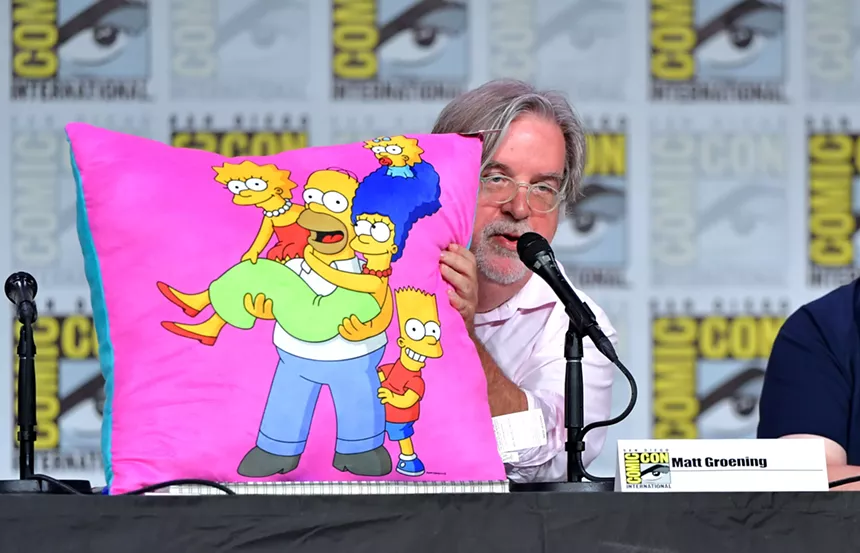
Simpsons creator Matt Groening based the Simpsons family on his own family and himself on Bart.
Amy Sussman/Getty
There are a ton of great TV cartoons that would make for fun, immersive galleries, but pretty much all of them can be traced back to the grandaddy of the genre.
The Simpsons started world-building back in the late '80s when cartoonist Matt Groening made the jump from animated shorts on The Tracey Ullman Show to a primetime Christmas special. The fictional town of Springfield has more inhabitants than most actual rural townships, and it's not just because it's been on the air for more than 30 years. The Simpsons' creators and shapers developed the show's own style and sensibility for comedy. The cartoon has influenced the genre and medium for decades and, hopefully, for more if Disney doesn't screw it up. Getting to walk through a virtual Springfield and see how its style and sense of humor has developed and grown and affected American humor is worth a $20 ticket.
3. Devo
There's a lot more to Devo than producing hits "Whip It," "Beautiful World" and the greatest cover of The Rolling Stones' "Satisfaction" ever committed to vinyl. According to a profile in Vice's Noisey, the genesis of Devo started in the shadow of the Kent State shootings, when band co-founder Gerald Casale lost two of his friends Alison Krause and Jeffrey Miller. He moved in with a part-time art student named Mark Mothersbaugh and turned his senseless loss into an angry ethos for a nonsensical world.
The group's artsy style plays just as big of a part in its music as its lyrics and instrumental sound, so it's worth exploring on a bigger canvas. Devo envisions a futuristic utopia that bathes in subversion by reminding us how we're going backward even when we're moving forward. Devo got lumped in as "new wave," but it's way more punk than pop in the way it turns concepts like nostalgia and advertising on itself and delights in how it swallows itself like a snake eating its own tail. The group's music and style are a mockery of achieving an ideal that never came to reality and a call for absurdity before the term loses all its meaning.
4. Twin Peaks
Twin Peaks is an anomaly because it's such a rarity in the plastic world of television drama. And just so we're clear, we're referring to the David Lynch TV series and not the "breastaurant" chain. It's a parody of the mystery melodrama without outright calling it that. It toys with its audience the way kids toy with something they know will probably bite them. Somehow, that's exactly what draws so many people to it, and it's a phosphorescent masterpiece.
The show centers on a fictional woodland town and an unthinkable murder that occurs with quantum connections to good and evil. The jumping off point for the whole series is the "whodunnit?" concept, but it's the only time a TV series has turned the genre on its head. The series solves the murder halfway through the run but the true mysteries worth solving run much deeper — in images such as The Arm and BOB and atmospheres of The Red Room and The Black Lodge.
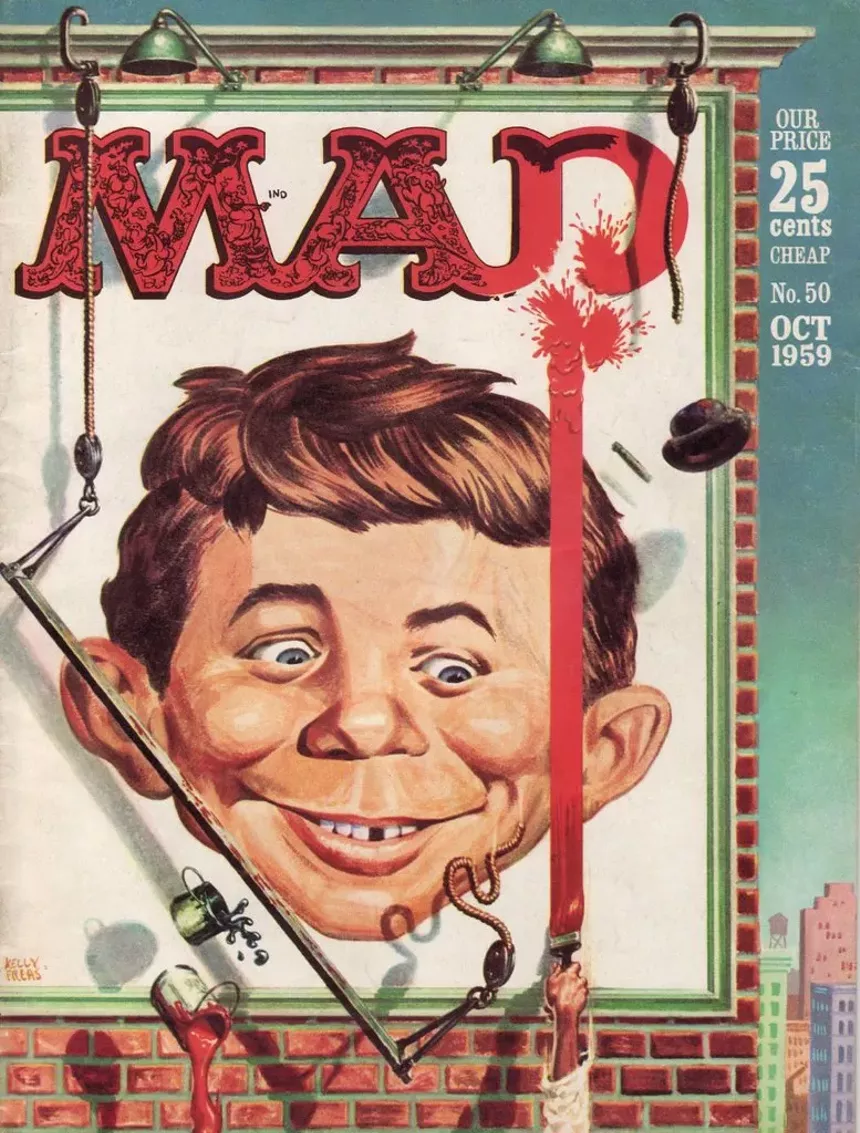
Artist Kelly Freas drew more than 40 covers featuring Alfred E. Neuman for MAD Magazine.
Jasperdo/Flickr
DC Comics announced in 2019 that it would cease publishing one of America's oldest and most popular humor publications. Instead, it continued to publish new issues of MAD with some of its classic material but only with new covers, art and its famed "Fold-In" invented by artist Al Jaffee. It's the kind of dumb idea that MAD would mock if it was allowed to print new material.
The decision to not kill the entire franchise is also a testament to its draw and style. The magazine was an ever-changing collection of artists and writers who were allowed to explore their own satirical styles whether it was a movie parody recreated as a comic book panel or a collection of jokes. The style of "cheap is funnier" created by its founder and longtime publisher William Gaines — the comic book maven behind other iconic favorites like Tales from the Crypt and Two-Fisted Tales — has become its own art form and has influenced humor across the international landscape from its dime store mascot to the tiny cartoons that filled the margins of its pages.
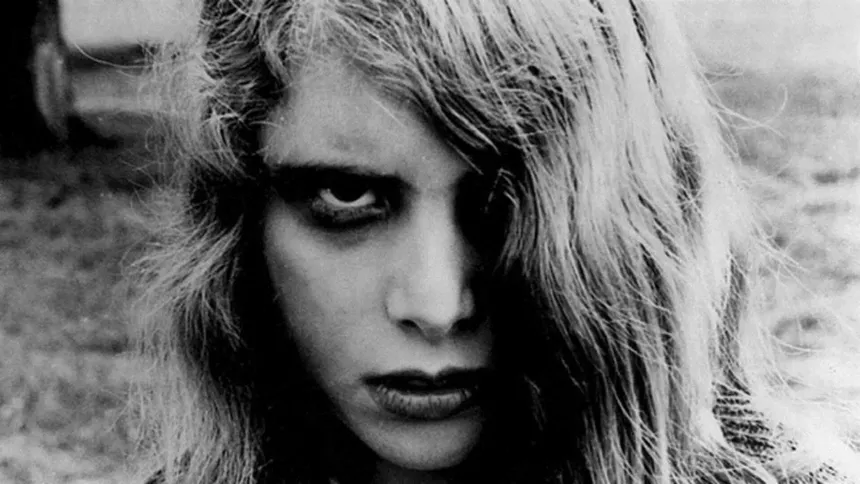
George A. Romero's Night of the Living Dead put zombies on the cinematic map before Hollywood literally ran them in the ground.
bswise/Flickr
So many zombie movies don't get it. For starters, zombies do not run. They are the dead coming back to life. Decomposition doesn't turn you into Usain Bolt, for Christ's sake.
Zombies are scary because they are the masses. They are one group of beings operating in one unstoppable mode that moves, talks and reacts as slowly as snails, but eventually their sheer numbers wear everyone down and then they consume you. Director George Romero recognized this brilliant metaphor with his classic Night of the Living Dead, which shocked audiences at a time when horror movies were just stories written to create jump scares and cheap thrills. He developed a style of horror film that actually spoke to its audience with grim images and unflinching violence in very real ways that some audiences weren't prepared to hear. His movies talked about racial bigotry, consumerism, the military and inequality in that order from Night of the Living Dead to Land of the Dead with stark images that stick with you.

